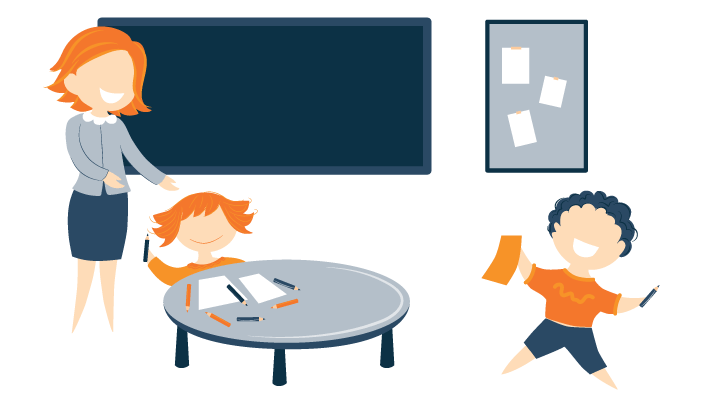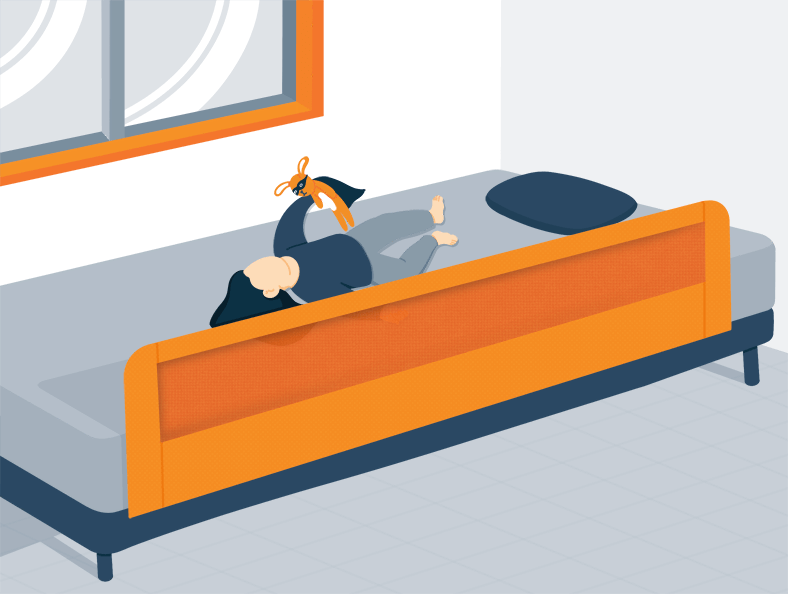Toddlers and preschoolers need a lot of sleep—but how do you know if they’re getting enough?
If you’ve ever encountered a threenager, you probably know what happens when a preschooler doesn’t get enough rest. Young kiddos always go from tired to tantrum when they haven’t had enough zzz’s. Sound familiar?
The recommended hours of rest are based on age but also individual needs. Knowing how to tell when your tot is well-rested can make a world of difference in their behavior—and your sanity. Read on to find out how much sleep a three-year-old needs.
How Much Sleep Should a 3-Year-Old Get?
According to the American Academy of Sleep Medicine, most three-year-olds need between 10 to 13 hours in a 24 hour period (including naps) for optimal health. Keep in mind that 2-year-olds need up to 14 hours, so if your toddler just celebrated their third birthday, their needs may be higher.
Find out more: How Much Sleep Do Kids Need? – Recommendations by Age
Do Preschoolers Still Need to Nap?
If your child is three, you may be wondering if they still need a nap in the afternoon. While they may not be happy about it, the majority of preschoolers continue to nap for a couple of hours a day until they’re four or five. Some lucky kindergarten teachers even have students that will fall asleep during rest time (yes, they still do that in schools).
Some parents love having a couple of hours of freedom in the afternoon to themselves, but others see naptime as a nuisance that interrupts the day. Regardless of which camp you fall into, some preschoolers simply can’t make it through the entire day without a snooze. With all that running around and playing, it’s easy to see why!
Aside from just needing to give their little bodies a break, naps are important for other reasons too. Preschoolers are constantly learning as they navigate their day, and all of that new information needs somewhere to go. Naps give the brain a chance to move short-term memories into long-term storage.
Average Sleep Schedule
Most 3-year-olds need 10 to 13 hours at night plus a 1 to 2 hour nap in the afternoon. At this age, an early bedtime between 7 and 9 PM is best.
Why Does a 3-Year-Old Need So Much Sleep?
Sleep is important for learning, growth, development, and so much more. Unfortunately, research has found that most children aren’t getting enough. A meta-analysis discovered that the average preschooler gets just 9.68 hours a day.
While it may not sound like a huge loss, missing out on even just a few minutes of shut-eye can have serious consequences. Remember that threenager analogy? It’s a real thing! Without rest, preschoolers have a hard time regulating emotions, which means a lot more misbehavior—and tantrums!
We talked in another article about how missing out on sleep increases the risk of learning difficulties, a weakened immune system, and more. Your little one is growing and developing at a rapid rate during the preschool years, and adequate rest is essential. During sleep, growth hormones are released, body tissues are repaired, and memory consolidation takes place.
Learn more about their sleep in our guide: Parent’s Guide to a Child’s Sleep
How to Tell if Your Preschooler Needs More Hours of Sleep
If your little one is constantly cranky, struggles to listen, and has frequent tantrums and meltdowns, there’s a good chance that they aren’t getting enough rest. Toddlers and preschoolers are learning about boundaries and testing limits, so some emotional ups and downs are expected. But if your tot goes from one meltdown to the next from sunrise to sunset, it could be a sign that they’re overtired.
At this age, children can quickly go from tired to wired. Fighting naps and bedtime may also be a clue that their sleep needs aren’t being met.
Creating a Bedtime Routine
An earlier bedtime with a calming pre-bed routine may actually help your little one to fall asleep faster. Preschoolers love routine, so keeping the schedule consistent can help to signal their brains that sleepy time is coming. A warm bath, pajamas, book time, and tuck in is a typical routine at this age.
Should a Three Year Old Sleep in a Crib or Bed?
While it may be tempting to keep your child in a crib until they leave for college, they’ll likely be making Houdini-like escapes before their third birthday. For safety reasons, the American Academy of Pediatrics (AAP) recommends moving your toddler to a bed when they’re reached 35 inches (89 cm) tall, or when the side rail height at the lowest setting is approximately at nipple level.
Moving to a toddler or twin bed is a big transition and may temporarily cause some bedtime battles. Getting your child ready by reading books about this big kid move, letting them pick out new bedding, and practicing during the day can make the transition easier.
Should a 3-Year-Old Use a Pillow?
Pillows aren’t required at this age. Many young children sleep on their stomachs, and not using a pillow is actually better in this position for spinal alignment. If your little one prefers to sleep with a pillow, there are some great toddler-friendly options.
Conclusion
Making sure your kid gets adequate rest is just as important as exercise and a healthy diet. At this age, most children need 10 to 13 hours, including a 1 to 2 hour nap in the afternoon. Keep in mind that every child is unique, and so are their sleep needs.
Mood and behavior are two of the biggest indicators of a well-rested preschooler. Aim for a consistent daily routine with lots of opportunities for movement and fresh air. And remember that an early bedtime with a calming pre-bed routine will help to set the stage for sleep—and sanity.
More Reading:
Jill Zwarensteyn
Editor
About Author
Jill Zwarensteyn is the Editor for Sleep Advisor and a Certified Sleep Science Coach. She is enthusiastic about providing helpful and engaging information on all things sleep and wellness.
Combination Sleeper



